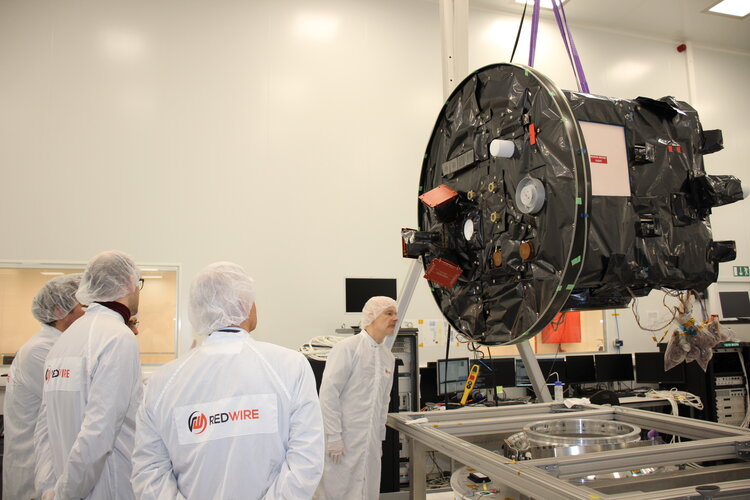
Sustained observations will only be made possible by the spacecraft entering formation for a sustained period of time, enabled in turn by an onboard suite of guidance and control methods, including satellite navigation receivers, radio inter-satellite links, lasers and optical cameras.
Damien notes: “The latter will be guided by light emitting displays placed on the face of both spacecraft for the other to see. In fact one of the reasons the spacecraft’s multi-layer insulation is black is to ensure maximum contrast with the onboard LEDs so the cameras can observe them clearly.”
The satellite pair will fly on a highly elongated (or ‘elliptical’) 19 and a half hour orbit that will see them venture a maximum 6 0530 km away from Earth – performing observations at the top of each orbit to minimise gravitational and illumination effects from our planet. For the rest of their orbit they will be free flying with respect to each other.
Next month the spacecraft will be shipped to IABG in Germany for the start of a four-month environmental test campaign, simulating every aspect of the launch and space environments. Proba-3 is due to be flown by PSLV launcher from India next year.



